Jäger, Stefan
Banat Fine Artist
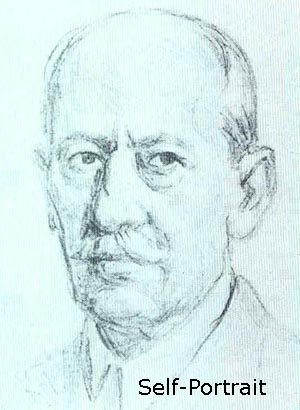
Stefan Jäger was born in 1877 to barber Franz Jäger and Magdalena nee Schuller in Tschene, Torontal. At the age of 12 in 1889 he was sent to Wieszners a private boy’s school in Temesvar. Four years later he attended the middle school in Szegedin, (1893-95) where he discovered that he liked drawing best. He died in 1962 Hatzfeld.
Stefan Jäger Art Collection
includes: 2002 Banater Kalendar, 2003 Banater Kalendar & Miscellaneous Paintings
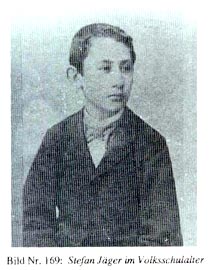
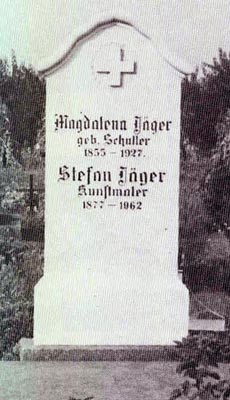

Jäger’s famous
Die Einwanderung der Schwaben
‘The immigration of the Swabians’
click photo to enlarge
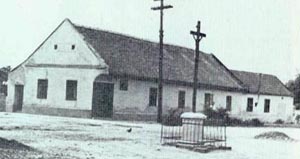
Stefan Jäger’s birthplace. At 18 he attended the art school in Budapest, where he was influenced by the famous painters Professor Ballo, Greguss and Szekely.
Around that time his father became seriously ill and could not support Stefan financially any longer, he died in 1901. Stefan found a tutoring position with a wealthy family, which enabled him to continue his studies.
His first commissions were for the Budapest private gallery Almasy, where Jäger’s religious motives, still life and landscapes were sought after. The city of Arad, Jazowa, etc. commissioned Stefan the paintings for their altars.
At the beginning of the 20th century Jäger was already well known and lucky for the Donauschwaben he settled down in Hatzfeld. He returned to Hatzfeld after the war years of 1914-1918 where he participated as a Landsturmann on the Isonsfront and in Dalmatia.
In 1930 Grossbetschkerek went out of its way to help Jäger with his first exhibition. By then he was already known as the “Schwabenmaler” (Danube Swabian artist). For his famous Triptych Jäger visited the diverse localities in Germany to see the original folk costumes from where his beloved Danube Swabians originated from.
Stefan Jäger died in 1962 and is buried in Hatzfeld, besides his mother Magdalena, who passed away in 1927.
The “Stefan Jäger” Memorial House – is located in Jimbolia / Hatzfeld.
Theiszmann Pitzer, Sister Mary Agnes. Es war einmal. The Yesteryears of the Danube Swabians. The book is in English. 269 pp. including 24 black/white photos by renowned Danube Swabian painter Stefan Jäger. Heimat Publishers
Stefan Jäger, Short Bio & childhood photos from the book by Karl-Hans Gross, Stefan Jäger,
Maler seiner heimatlichen Gefilde, @ 1991.
*
Stefan Jäger “2002 Banater Kalender” Paintings
Published by the Landsmannschaft der Banater Schwaben.
Captions translated by Diana Lambing. Published at DVHH.org by Jody McKim Pharr.
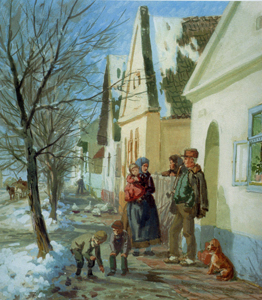
January 02 – Dorfstrasse im Winter
‘Village street in winter’
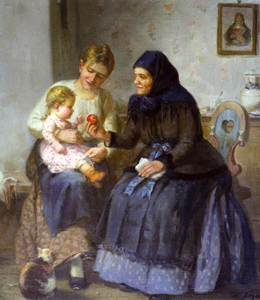
February 02 – Besuch der Oma
‘Grandma’s visit’

April 02 – Bei der Kindtaufe
‘At the christening’
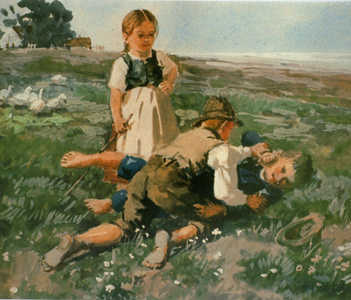
May 02 – Spielende Kinder
‘Children playing’
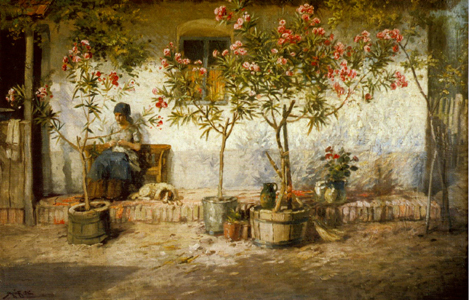
June 02 – Hof mit Oleander
‘Yard with oleander’
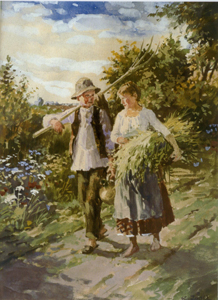
July 02 – Auf dem Heimweg
‘On the way home’
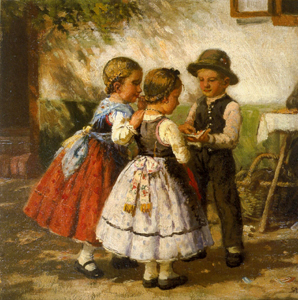
August 02 – Kinder in der Festtagstracht
‘Children in their festive costumes’
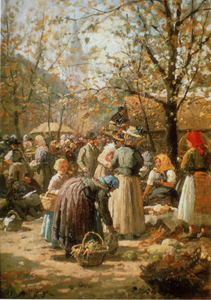
September 02 – Markttag in der Stadt
‘Market day in town’
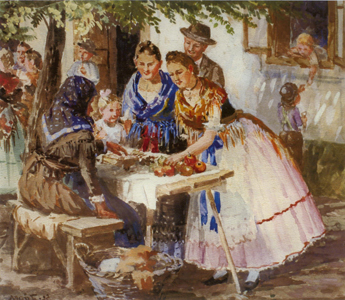
October 02 – Kirchweihmarkt
‘Kirchweih market’
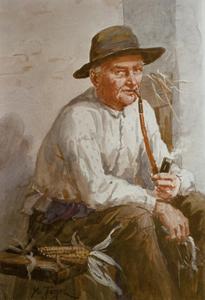
ovember 02 – Der Kukuruzriwler
‘The corn stripper’

December 02 – In der Kirche
‘In Church’
Stefan Jäger “2003 Banater Kalender” Paintings
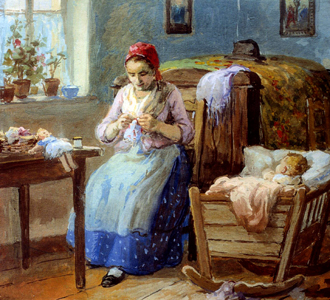
January 03- Mutterliebe
‘Mother Love’
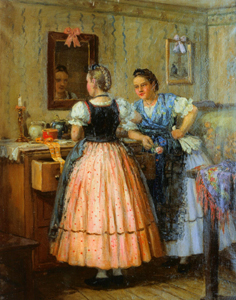
February 03- Vor dem Spiegel
‘In Front of the Mirror’
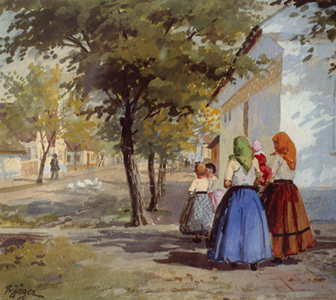
March 03 – Am Sonntag Nachmittag
‘Sunday Afternoon’
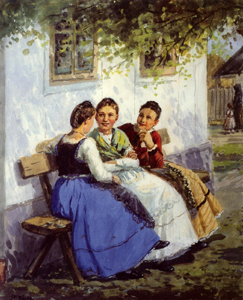
April 03 – Sonntags auf der Gassenbank
‘Sunday on a Street Bench’
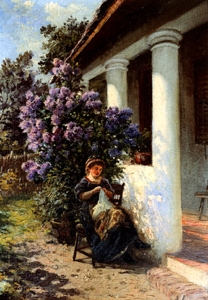
May 03 – Hofpartie mit Flieder
‘Part of the Yard with Lilacs’
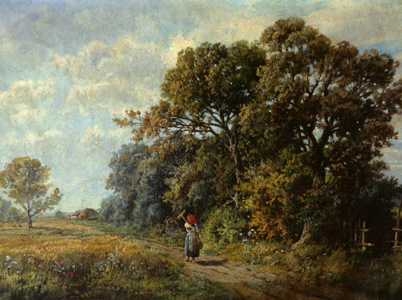
June 03 – Auf dem Heimweg
‘On the way home’
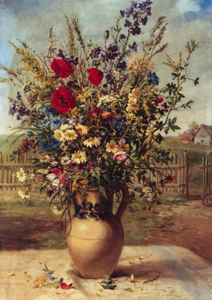
July 03 – Feldblumenstrauss
‘Bunch of Wildflowers’

August 03 – Blumengarten
‘Flower Garden’

September 03 – Tanzpause
‘Dance Interval’
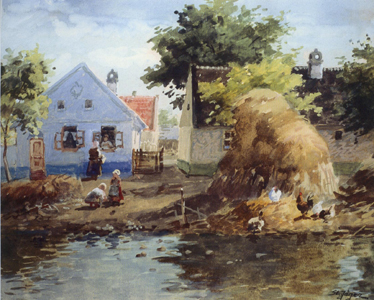
October 03 – Dorfrand mit Kaul
‘Village edge with waterhole’
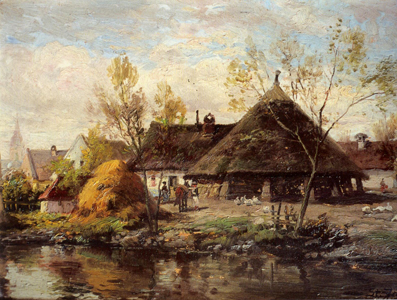
November 03- Rossmühle Mill
‘Rossmühle Mill’
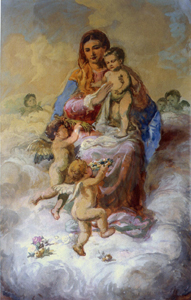
| December 03 – Madonna mit Kind ‘Madonna with Child’ |
Stefan Jäger “Miscellaneous” Paintings
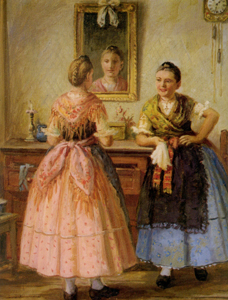
‘In the Mirror’

Neckerei
‘Teasing’
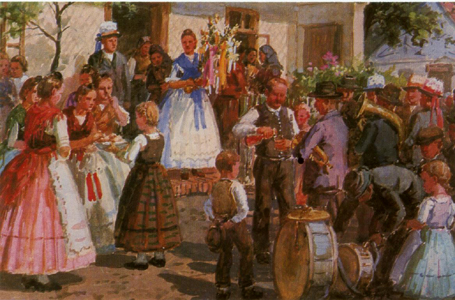
Kirchweihfest
‘Kirchweih festival in the Banat’
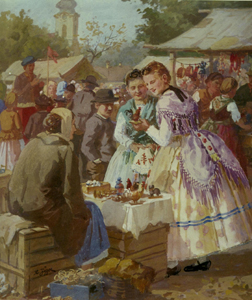
Kirchweihstimmung
‘Kirchweih mood’
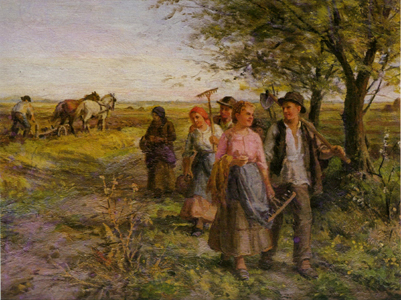
Heimkehr vom Feld
‘Returning home from the field’
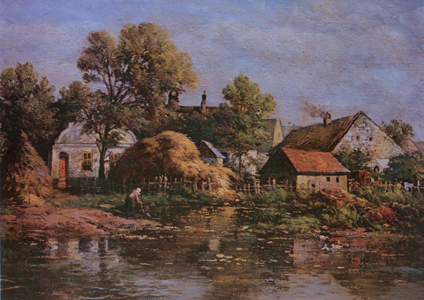
Am Dorfrand
‘At the edge of the village’
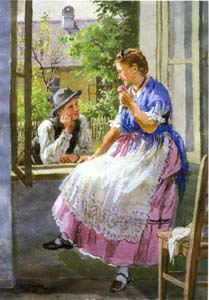
‘Courting’

‘Chatting’
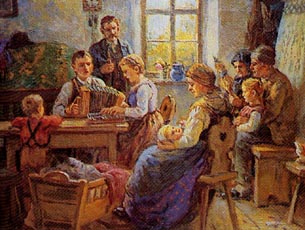
| ‘Swabian house concert’ |
Last updated: 07/24/2025



